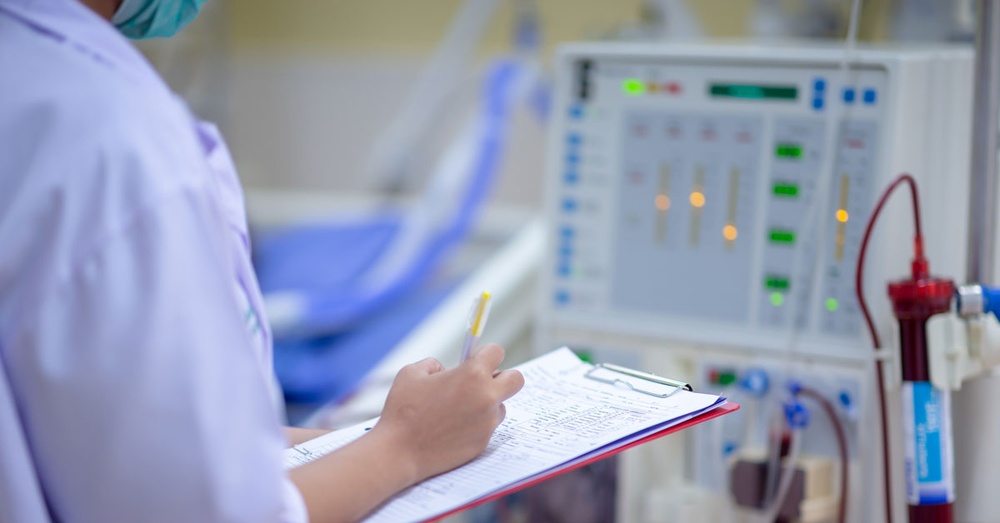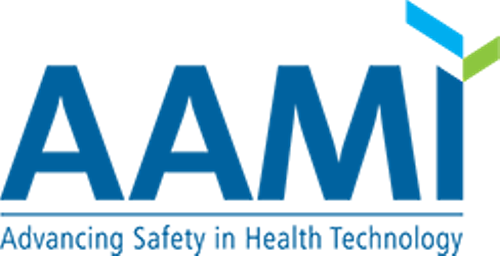Acute Dialysis Survey Readiness Handbook Gets "Tremendous" Update

A series of unexpected events upended the best-laid plans for a new AAMI publication, the Acute Dialysis Survey Readiness Handbook. Nevertheless, the authors persisted—and their practical handbook is now indispensable for anyone responsible for patient safety and outcomes in acute dialysis settings.
“A Tremendous Amount of Updating”
Glenda Payne, chief compliance officer and co-founder of the National Dialysis Accreditation Commission, wrote the original handbook with the late Jo-Ann Maltais, who served as cochair for the AAMI’s Renal Disease and Detoxification Committee.
“The first edition was really the only source of information on how to prepare for a state or accreditation survey of an acute hemodialysis unit, where patients can be at risk,” Payne said. “Jo-Ann really pushed me to do this handbook in the first place, and we were both disappointed when it had to be retired as “out of date.” We were determined to get this revision done; Jean and I found the revision required a tremendous amount of updating.”
The overhaul was necessary because “the regulations are ever-evolving towards higher standards of care for our patients to decrease their morbidities and mortality,” said Jean Colaneri, nurse practitioner, clinician, and educator at Albany Medical Center, who co-authored the new edition.
The handbook has been expanded and now includes:
- The various accreditation survey processes.
- Updated step-by-step guidance to prepare for a survey, guidelines on risk reduction, and examples of auditing tools useful for acute dialysis programs.
- Best practice audit information and case studies for additional assistance for ensuring patient safety, survey preparedness, continued improvement, and long-term compliance.
- Frequently asked questions.
- Definitions and abbreviations.
- Additional emphasis on emergency preparedness.
The primary audiences for this handbook are the nurse and physician leaders and staff who provide acute dialysis services, along with clinician educators. Many others will find it useful as well, including companies that develop dialysis products and the accrediting organizations. “There are lots of clues in the handbook for how to do a survey, as well as from the point of view of the nurses who provide the services, medical directors, and quality improvement, regulatory, and compliance staff,” Payne said.
“I hope the update will make the regulations more understandable and easier to implement for acute dialysis units,” Colaneri added. “I also hope it will be a practical and readable resource for survey readiness, which really means that we all know how to do things the right way and we do them correctly 100% of the time.”
The Pandemic’s Payoff
The saga begins in September 2020, when Payne invited Colaneri to coauthor a thorough update of the 2014 edition of the handbook.
“I was honored that she asked me,” Colaneri said. “Glenda is one of the most knowledgeable experts in the U.S., and possibly the world, in end-stage renal disease regulatory guidance and evidence-based care, as well as a prolific author and speaker. She’s also an awesome editor.”
Payne and Colaneri set a very ambitious agenda to complete the project by December 2020. COVID-19 disrupted their plans—but it also gave them valuable insights that informed the revision of the handbook.
First, “a significant second wave” of COVID-19 overwhelmed Albany Medical Center from November 2020 to February 2021. “This would sidetrack me for weeks since I work in the clinical area with acute dialysis and CRRT [continuous renal replacement therapy] patients,” Colaneri said. “And just when we thought it was getting safer, another wave was upon us in July 2021. Now we are realizing that this horrible virus will be endemic with episodic contagion increases, like the flu. We continue to be challenged by the more lethal and contagious viral mutations, like the Delta variant, and the ongoing vaccination refusals.”
Then, in January 2021, Payne and her husband contracted the coronavirus. “That was also a bit of downer, to say the least,” she said. Coincidentally, Albany Medical Center had just opened a clinic offering monoclonal antibody therapy for early-stage COVID-19, which was not widely available at the time. Colaneri sent the information she had about this therapy to Glenda and told her, “You might want to think about this.”
“I was fortunate,” Payne said. “My husband and I did get the monoclonal antibodies right away. I wasn’t hospitalized or ‘that sick.’ But my husband had bronchitis as well, so he was sicker than I was. But you just feel exhausted and certainly not up to working or thinking clearly. The brain fog is real. That’s not a good time to try to put a book together.”
However, the wait came with a silver lining. Due in part to the pandemic, the handbook now puts more emphasis on emergency preparedness, grounded in regulatory focus on how dialysis would be affected by emergencies. Indeed, COVID-19 can cause acute kidney injury and even failure. The authors were also able to update their draft at the end stages of production to incorporate new emergency preparedness guidance from the Centers for Medicare & Medicaid Services.
“I am convinced that without regulatory guidance, our dialysis patients would be at significant risk of safety events. Regulatory guidance combines the best evidence-based patient safety practices with in-person observations of how this guidance is implemented in the clinical area,” Colaneri said.
About AAMI
AAMI (www.aami.org) is a nonprofit organization founded in 1967. It is a diverse community of more than 9,000 healthcare technology professionals united by one important mission—supporting the healthcare community in the development, management, and use of safe and effective health technology. AAMI is the primary source of consensus standards, both national and international, for the medical device industry, as well as practical information, support, and guidance for health technology and sterilization professionals.
Contacts


